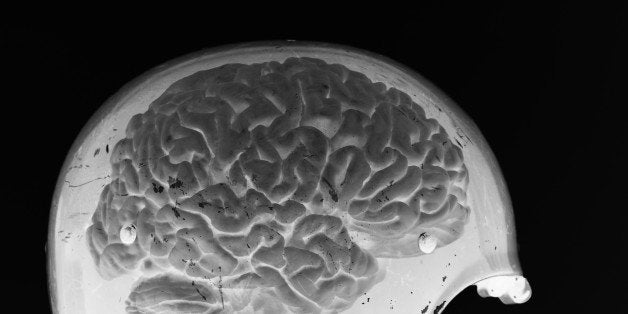
By: Leigh Steinberg ORIGINAL POST on Forbes.com
As NFL Training Camps opened this week there were some positive developments in the treatment of observable concussions, but the larger problem of undiagnosed sub-concussive hits remains a ticking time bomb. The NFL and NFL Players Association have agreed to some new changes that show seriousness in enforcing the concussion protocol used to diagnose impaired players during games.
In press boxes this year an Independent Athletic Trainer Spotter Program will have trainers scanning the field trying to spot "distressed or disoriented" players so they can be pulled to the sideline and evaluated. Neurotrauma Consultants who are not affiliated with either team during the game will be on the sidelines involved with every concussion evaluation and decision. This provides a higher level of scrutiny than existed before.
A system of fines is being instituted for any team failing to properly use the concussion protocol. A first offense results in a $150,000 fine, a second violation results in an additional $100,000. Considering modern NFL economics, these are slaps on the wrist, but it puts teams on notice. If there is evidence that the motivation for failing to use the protocol is to gain competitive advantage, draft picks can be taken away from teams. As the fears of liability posed by the lawsuit against the NFL recedes it is likely the League will become more aggressive.
The larger problem is that each time larger, stronger, faster bodies collide on each play, it can produce a low level sub-concussive event. The actual G-Force at the line of scrimmage continues to rise dramatically. The player is not knocked out and simply goes on playing. It is possible that a lineman could enter retirement having aggregated 10,000 sub-concussive hits, none of which have been diagnosed. The cumulative effect of these hits may lead to Alzheimer's, premature senility, chronic traumatic encephalopathy, and depression.
Injury to the brain has the potential to completely alter the life experience of a retired player in a way that virtually no other injury can do. The brain is the center of judgment, memory, mood control, perception, and it is not designed to function well with repeated impact with the skull. It is possible to make the game safer and lower the incidence of concussion.
Parents need to carefully consider when it is appropriate for a child to play tackle football. The Ivy League will be playing football this year with no player contact during training camp or in-season practices. Coach June Jones coached the Atlanta Falcons and the University of Hawaii effectively without extra contact. New approaches to helmetry are being developed by many companies. Tate Technology has a design which employs coil and compression to displace the incoming energy and reduce the force dramatically. Better diagnostic equipment is being employed on the sidelines. Nasal sprays like Prevacus can be employed after a hit to stop the brain from swelling.
This is not a problem unique to the NFL. Concussions occur in collegiate and high school football, hockey, field hockey, soccer and many other sports and activities. This sets up a worldwide market for concussion prevention and treatment that can attract the best and brightest engineers, neurologists, and researchers to find solution. The NFL dominates entertainment and popular culture and so it symbolically sets the trends in concussion awareness, prevention, and treatment. All of us who love football need to continue to push for enhanced safety.